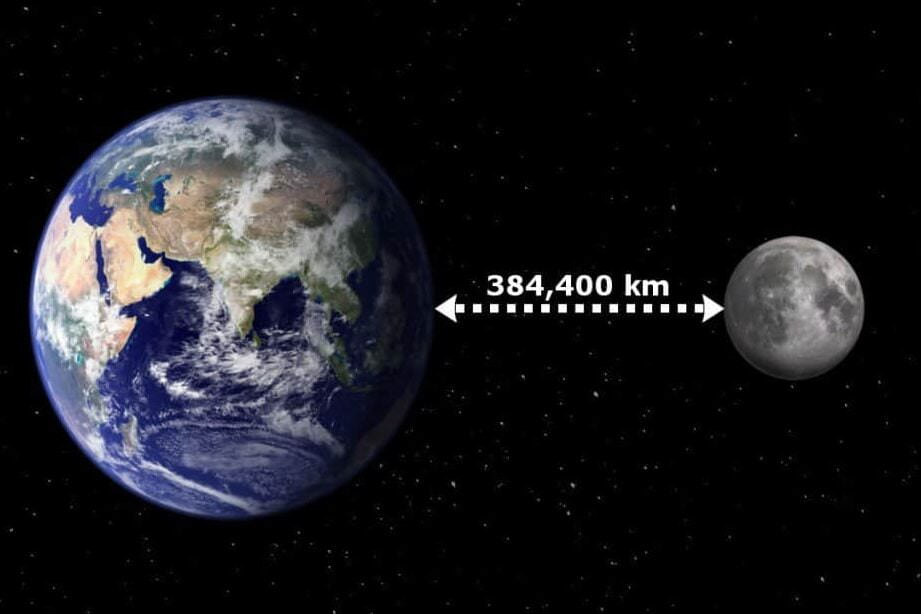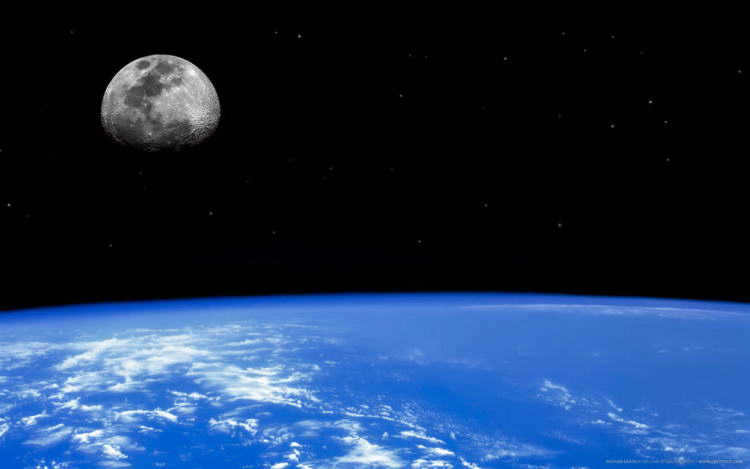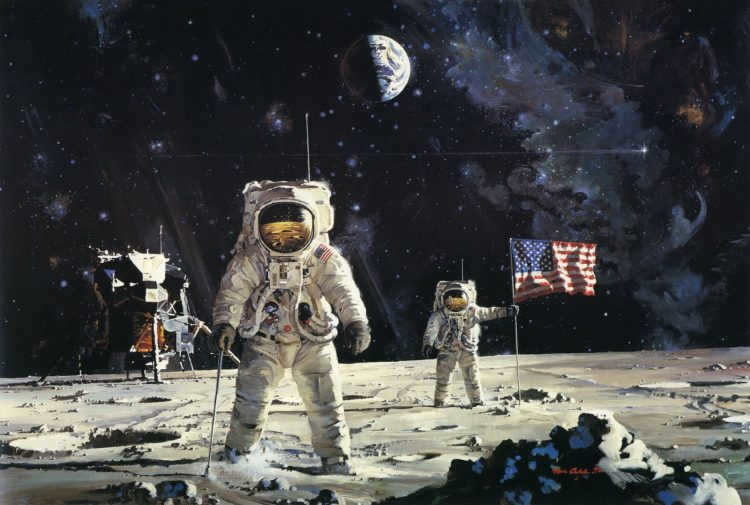
- Solar system
The moon has always been a fascination for humanity. I believe that most of us have dreamt of becoming an astronaut and visiting it. With the rise of space tourism, many people are now curious about the time it takes to travel from Earth to the Moon.
The minimum distance from Earth to the Moon is 354,988 kilometers. To cover this distance, a person would need:
- 9 years of continuous walking at a speed of 5-6 kilometers per hour;
- 160-163 days if driving a car at a speed of 100 to 105 kilometers per hour;
- 20-21 days of uninterrupted airplane flight at a speed of 800-850 kilometers per hour;
- To travel from Earth to the Moon using the Apollo spacecraft, it would take approximately 72-74 hours;
- If you were to journey to the Moon at the speed of light, which is 300,000 kilometers/second, the entire trip would last 1.25 light seconds.
When utilizing specialized flying transportation, the duration of the journey to the Moon would be:
- It takes approximately 1 year and 1.5 months to reach the Moon if you travel on the ESA SMART-1 probe-like device. This spacecraft is unique because it uses an ion engine, which is considered the most fuel-efficient in its class. Despite being the slowest in terms of travel time, the ESA SMART-1 mission was the most technologically advanced. Launched on September 27, 2003, the SMART-1 lunar lander reached the Moon after 410 days, consuming only 82 kg of fuel during its journey. This makes it the most cost-effective mode of transportation.
- On the other hand, it takes 5 days to reach the Moon on the Chinese satellite Chang’e-1. This spacecraft relies on conventional rocket engines for its flight. However, it had to remain in Earth orbit until October 31, waiting for the optimal departure point. It finally arrived on the Moon on November 5, completing its journey using traditional rocket engines.
- It would take approximately 36-37 hours to reach the Moon if you were flying on a spacecraft similar to the Soviet satellite Luna-1. This satellite traveled a distance of only 500 kilometers from the Moon before entering a heliocentric orbit. It took the satellite just 36 hours to complete this journey.
- If you were to embark on NASA’s New Horizons mission to Pluto, it would take almost 9 hours to reach the Moon.
Currently, the fastest journey to the Moon was achieved by NASA’s New Horizons during its mission to Pluto. Right from the start, the satellite was propelled at an incredible speed of around 58,000 km/hour. This high velocity was necessary to overcome the gravitational pull of the Sun in the solar system. Despite this impressive speed, it still took the satellite eight hours and thirty-five minutes to cover the distance of 380,000 kilometers.
Therefore, there are multiple possibilities for sightseeing tours around the Moon that space tourism companies can explore. They have the option to provide extended cruises utilizing ion engines, as well as brief cruises utilizing fast and robust rockets to transport individuals to the Moon for a weekend.
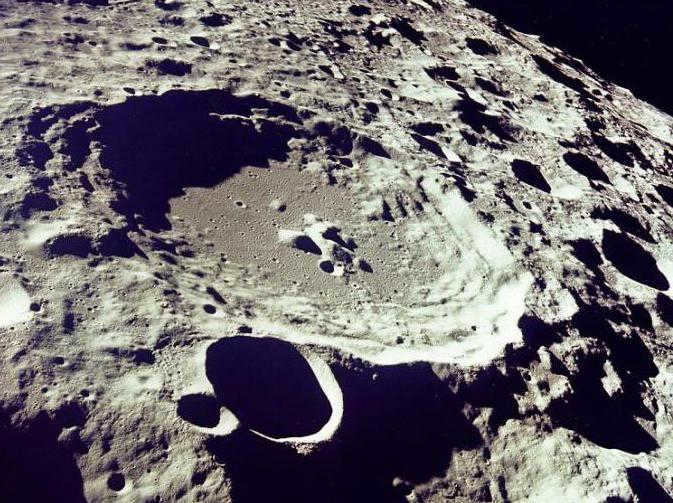
Why did missions to the Moon and efforts to explore it come to a halt?
Has anyone ever visited our planet’s natural satellite? And if so, why have countries ceased their missions to the Moon? According to the Americans, the initial expedition was launched in 1969, to be exact, on July 20th. Neil Armstrong led a group of astronauts. At that moment, the Americans were overjoyed. They had become the first to touch the Moon’s surface. However, this achievement was met with skepticism by many.
The skepticism surrounding the issue stemmed from the abundance of photographs and documented conversations between the expedition members and Earth. However, during that era, fabricating images was a challenging task. Moreover, there were physical evidences such as equipment and laser reflectors left on the Moon’s surface for future research. Some theories suggest that these items were delivered by an unmanned module. Ultimately, it is nearly impossible to definitively prove or disprove whether someone has set foot on the Earth’s satellite. Additionally, a significant number of documents pertaining to the matter remain classified.
Political situation
This is the primary reason why the moon flights were discontinued. It must be remembered that during that time, there was a fierce competition between two major nations to be the first to successfully launch a rocket into space. The turning point in this battle came with the introduction of nuclear reactions. The potential of this discovery was not only thrilling but also intimidating. Furthermore, there was no clear frontrunner in this race. Both the USSR and America dedicated significant resources to space exploration. The Soviet Union ultimately achieved the milestone of sending a human being into space. So, if the USSR had accomplished this feat, why did the moon flights fail? Why were they halted before they even began?
America faced a challenge and NASA has made significant efforts to respond. The highly publicized moon missions are more than just a feat; they serve as a demonstration of American superiority on a global scale. Perhaps this drive for dominance is what led to the termination of the program. After all, other countries lacked the financial resources to surpass America’s advancements. Therefore, is it truly beneficial for the nation to continue investing its energy and funds into further missions?
The economic factors behind discontinuation of moon missions
Undoubtedly, the cessation of moon missions can also be attributed to the economic considerations of nations involved. Considerable financial investments were made by countries in the development and launch of spacecraft. If we were to hypothetically divide the lunar surface, its territories would undoubtedly attract the attention of affluent individuals seeking lucrative opportunities.
Nevertheless, over time, a consensus was reached that all celestial objects are collectively owned by humanity. The purpose of any space exploration endeavors was to be exclusively for the benefit of all nations. Consequently, investing substantial financial resources into space exploration initiatives would ultimately prove fruitless. Furthermore, the nation that allocates such funds would be unable to progress. Consequently, there is no logical justification for extensive expenditures. After all, it is feasible to leverage the advancements made by other nations.
Areas of Production
In the past, it was more practical to adapt any enterprise to meet the needs of the state. However, at present, it is simply unfeasible to manufacture missiles with specific parameters due to the lack of suitable facilities. Moreover, reorienting an enterprise is a complex process.
The issue at hand is not only the financial aspect. The shortage of adequately trained specialists is the root cause. The generation that worked on the lunar program has long retired, and the new employees are still gaining experience. They do not possess all the necessary knowledge in this field. Mistakes in lunar missions are unforgiving, often resulting in the loss of astronauts’ lives. It is for this reason that it is better to refrain from conducting flights to the moon. The reason behind the cessation of lunar missions is not difficult to surmise.
Clip
Observing the night sky and contemplating the celestial bodies is a form of meditation that I find deeply soothing. While staying updated on the latest scientific advancements, I eagerly anticipate the day when humans will venture to the moon, akin to embarking on a journey to Greece. I often wonder about the estimated duration it would take for our future lunar tourists to reach their destination.
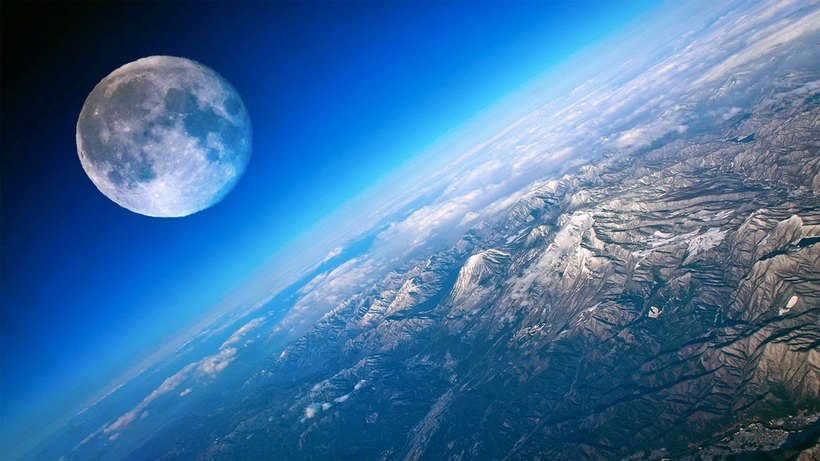
Available Objects for Space Travel
Progress in the development of manned missions to the Moon is currently moving at a rapid pace, as scientists have gathered a wealth of knowledge about this celestial body:
- The Moon consists of five distinct layers, including the crust, upper mantle, middle mantle, lower mantle, and core;
- It is covered with a layer of regolith, which is a fine dust composed of crushed lunar rocks resulting from collisions with other cosmic bodies;
- The Moon has two sides, the “dark side” being less explored and understood;
- There is virtually no atmosphere on the Moon;
- The average temperature on the Moon is approximately 57 °C;
- The distance between the Moon and Earth varies from 363,104 to 405,696 kilometers.
Interestingly, some Asian cultures associate the system of craters and dark spots on the Moon with a rabbit that is said to bake rice puddings.
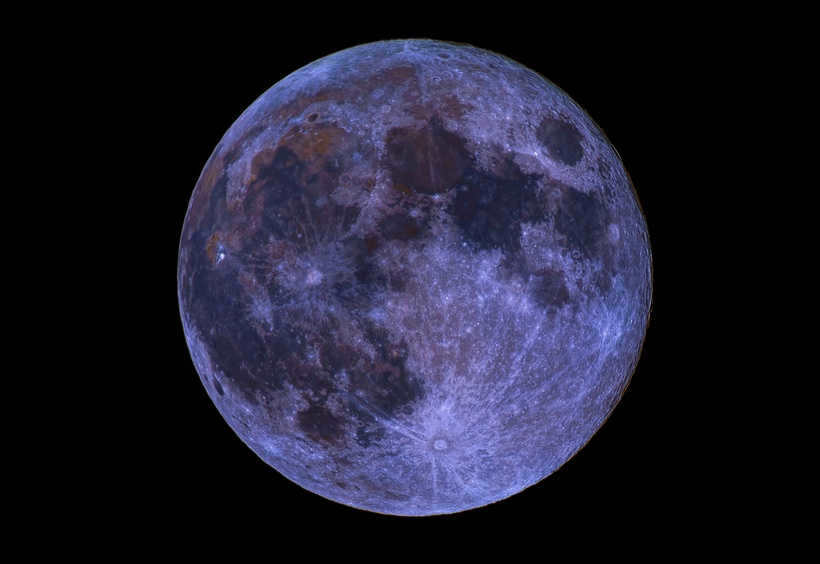
The moon often represents love, the purity of nature, and the study of the moon is known as selenology.
How quickly can you travel to the moon
To calculate the time, I took the average distance from Earth to the moon – 384,403 kilometers. Here are the calculations:
- A Formula 1 race car accelerating at 401 km/h would take 40 days to reach the moon;
- A Sapsan train traveling at an average speed of 350 km/h would take 46 days to reach the moon;
- Jules Verne claims his cannon can do it in just 97 hours and 20 minutes – a record of 4 days;
- The K-162 submarine at 80.4 km/h would take 199 days to reach the moon.
The genuine journey to the silver satellite
Have I made it clear that flights are not currently being arranged? They absolutely are! There is news about the arrival of such a popular tourist spot.
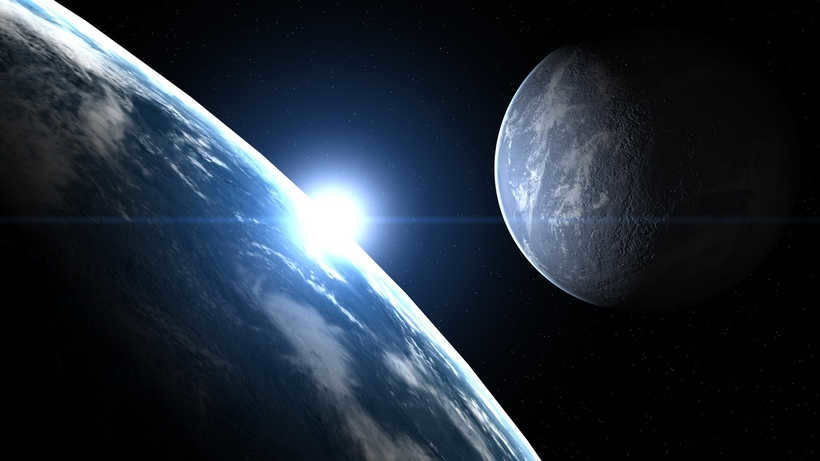
The initial journey is scheduled for June 29, 2019. It encompasses a trip to the International Space Station and a landing on the lunar surface. The astronomical price tag of 582.5 million dollars covers the provision of umbrellas and towels for a comfortable relaxation by the shores of the lunar seas. )
If you are interested, please note that payment can only be made in rubles!
The Lunar Reconnaissance Orbiter (LRO) is offering its own alternative, a virtual tour. The duration of the journey to the Moon will depend on the internet traffic, and the best part is, it won’t cost you a penny.
You’ve explored the entire globe. You’ve visited every country. Yet, you still crave more space on Earth. You yearn to venture to the Moon. How long will it take to reach your destination? Allow me to enlighten you on that matter.

What is the Moon
The Moon is an Earth’s natural satellite. Its average distance from Earth is approximately 384,467 kilometers or about one light second. It is important to mention that this distance is not fixed and can vary. This variation occurs due to the Moon’s orbit, which is not a perfect circle.
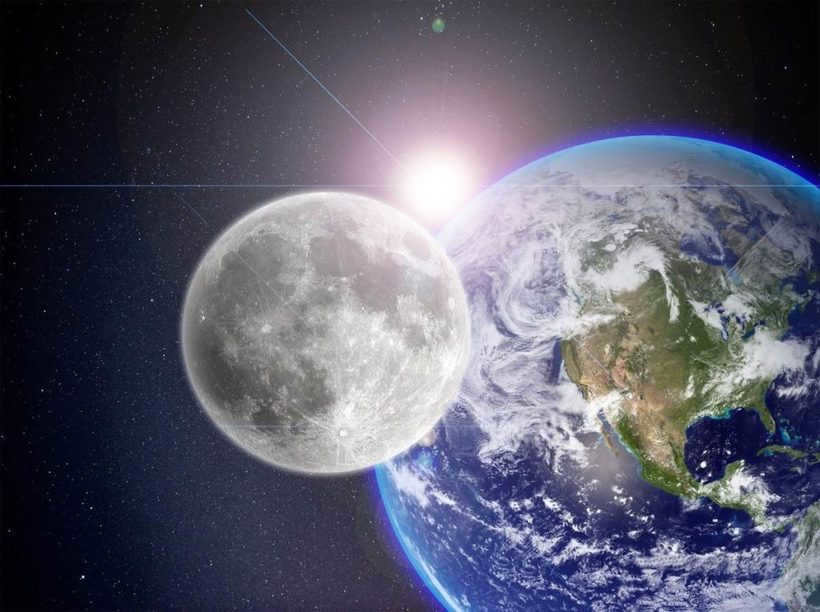
What is the estimated travel time to reach the moon?
I am curious about the duration it would take to travel to the moon using different modes of transportation.

- “The Boeing 777 has a maximum cruising speed of 905 km/h. It would require 425 hours or approximately 17 and a half days to cover the equivalent distance between the Earth and the Moon.
- The bullet from an AK 74 has a velocity of 900 m/s or 3240 km/h when it leaves the barrel. It would take around 119 hours or about 5 days to travel the distance to the Moon.
- The Saturn 5 rocket and Apollo 11 spacecraft had a speed of 10.84 km/s or 39,000 km/h on their flight path to the Moon. If the flight had followed a straight line, it would have taken approximately 9 hours to reach the Moon.
Characteristics of lunar flights
One of the unique aspects of jet flights is that they rarely follow a straight path. In order to conserve fuel, the engines are only activated for short periods of time at the beginning of the journey (for acceleration) and at the end (for braking). For the majority of the flight, the aircraft relies on inertia and the gravitational forces of the Earth, Moon, and Sun. These factors greatly influence the trajectory of the flight, making it a challenging task for ballisticians to calculate. When the Apollos were launched, they were not immediately accelerated to their maximum speed. Instead, they were first brought into orbit around the Earth’s satellite before being launched towards the Moon. Naturally, this required additional time. It took Apollo approximately four days to complete the journey from Earth to the Moon. Therefore, if you have plans to travel to the Moon, be prepared for a similar timeframe.
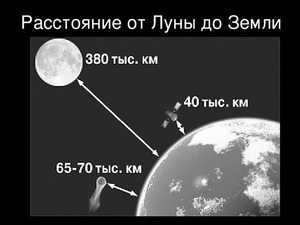
The Moon is an Earth’s only natural satellite, and it is a spherical rock without an atmosphere or any signs of life. It has a diameter that is approximately one-fourth the size of Earth’s diameter. Throughout history, the Moon has captivated people’s curiosity and has been the subject of various research and exploration.
Among the natural satellites in the solar system, the Moon stands as one of the largest. Its soil has a relatively low density, and samples collected from its surface continue to puzzle scientists. The prevailing theory suggests that the Moon formed around 4.1 billion years ago.
Motion
The average distance between the Earth and the Moon is 384400 kilometers, which is approximately equal to 60 times the radius of our planet. The proximity of the Moon to the Earth and its apparent size to the observer vary depending on its position in its elliptical orbit. At perigee, the Moon is about 363104 kilometers away from the Earth. At apogee, the distance between the centers of the Earth and the Moon is 406696 kilometers. The difference in distance between perigee and apogee is 43592 kilometers.
When observing the movement of this celestial object across the sky, one may be influenced by the optical illusion. When it reaches its highest point and is surrounded by vast space, its actual size may appear much smaller. When it is close to the Earth’s horizon, on the other hand, the Moon can seem to have a larger diameter.
As the satellite moves closer to or further away from the planet, the brightness of its surface changes. Scientific research has shown that the Moon does not emit light of its own, but rather reflects about seven percent of the sunlight that reaches it. This characteristic is due to the layer of regolith, which is formed by the impact of meteorites. The particles of debris vary in size, ranging from tiny to large, and can cover the surface with a thickness ranging from a few microns to tens of meters.
Factors influencing the Moon’s orbital motion
The movement of the Moon in its orbit is determined by the gravitational pull of both the Earth and the Sun. The Sun exerts a significantly stronger attraction on the Moon compared to our planet. The Moon’s orbital motion is influenced by various factors, including:
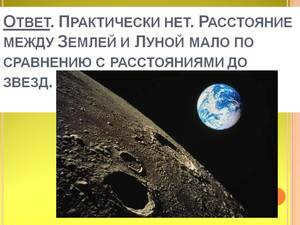
- The duration of the sidereal, or sideric, month is 27 days 7 hours 43 minutes and 11.51 seconds;
- The angle of inclination of the lunar orbit changes in relation to the plane of rotation of the Earth around the Sun;
- Changes occur in the lunar orbit itself at the points of perigee and apogee;
- The points where the planes of the Moon’s orbits and the Sun’s orbits intersect shift;
- The longitude of perigee increases in a cycle of 8.8 years;
- The dimensions of the orbit change at apogee and perigee.
The Moon’s orbit can be likened to a spiral that gradually unravels.
Here’s something fascinating: the intriguing origins and names of stars and constellations.
Measuring the Earth-Moon Distance
The Earth-Moon distance is not fixed. In the second century B.C., the ancient scientist Hipparchus of Nicaea was able to estimate this distance. His calculation yielded a value equivalent to thirty Earth diameters, which is approximately 384,000 kilometers.
The diameter was measured by Eratosthenes of Cyrenaica, an ancient Greek mathematician and astronomer. He placed a vertical pole near the library building and measured the length of its shadow. From this, he calculated the angle at which the sun’s rays hit the pole, which turned out to be seven degrees. Knowing that on the summer solstice in Siena, the sun is directly overhead, and that the distance from Siena to Alexandria is 5000 stadia, Eratosthenes deduced that 5000 stadia corresponds to 7 degrees of the Earth’s meridian. A complete meridian is 360 degrees, or approximately 250,000 stadia.
How to determine the distance to a satellite
There are various techniques for measuring the distance between the Earth and the Moon:
These measurements are identical because the lunar disk completely obscures the solar disk during a total solar eclipse. A simple twig can be used for the measurement. If you hold the twig at arm’s length, the ratio of its width to the distance between your eye and the twig represents the angular size of the Moon in radians. This value is approximately 0.0087. Converting radians to degrees yields approximately 0.5. With the knowledge of the Earth’s radius and the angular size of the Moon, it is straightforward to calculate the distance to the celestial object. By performing geometric calculations, the distance is determined to be equal to 30 diameters of our planet.
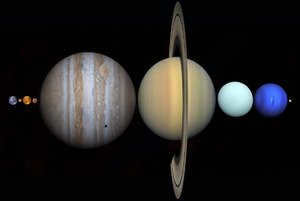
A beam of light is emitted from the Earth’s surface and directed towards the reflectors on the Moon, which were installed by astronauts over four decades ago. The beam travels at a well-known speed of light and upon reaching the reflector, it bounces back. The total distance covered by the beam is approximately one second. By recording the precise time it takes for the beam to travel and calculating the exact distance to the Moon, scientists have been able to determine that the celestial body closest to Earth gradually deviates from its trajectory, moving a few centimeters away from the planet each year.
Average distance to the Moon: wikipedia
The Moon’s orbit has a closest point located at an average distance of 362,000 kilometers. The farthest point of the lunar orbit is situated at a distance of 405,000 kilometers.
Twice a year, during the new moon phase, the Moon approaches the maximum node (the point at which it intersects with the ecliptic), resulting in a solar eclipse. For the rest of the time, the Moon’s movement occurs either under the Sun or above it. Lunar eclipses, on the other hand, occur during full moons, when the Earth’s natural satellite is also near the node.
Every 18 years and 224 days, a straight line connecting the nodes completes a revolution around our planet. Interestingly, the direction of rotation in this case is opposite to the Moon’s course.
Conclusion
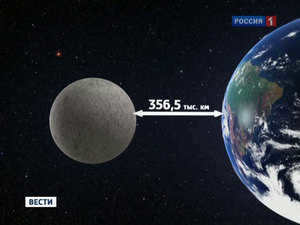
Over the course of a century, the length of a day on Earth extends by one thousandth of a second. This occurrence is a result of gravitational forces exerted by the Moon, which is the closest celestial body to our planet. The tides in the world’s oceans are affected by the Moon’s gravitational pull, and these tidal processes contribute to the slowing down of Earth’s rotation.
The gravitational field also has an impact on the shape of the Moon. There is deformation on the side of the Moon that faces Earth, although it is possible that this deformation is also influenced by the internal structure of the Moon’s layers.
The Moon’s elliptical orbit is affected by the gravitational pull of the Earth and the Sun, causing changes over millions of years that gradually move the Moon further away and make it appear smaller. This phenomenon will also make total solar eclipses even more remarkable.
Among the countless stars that adorn the night sky, the Moon stands out as a true gem. Its size and distance from Earth make it the second brightest celestial object, capable of completely blocking out the Sun during an eclipse. It’s no wonder that humans have been captivated by this nocturnal luminary for centuries.
If Earth were without the Moon, the world would be a very different place:
- Days would be significantly shorter.
- Seasons and climate would be more unpredictable.
- Tides would be less pronounced.
The Size of the Moon
When we consider the cosmic scale, the average diameter of the Moon, which is 3474.1 km, may not seem very large. However, it is still an impressive size, about half the distance from Moscow to Vladivostok.
Despite its seemingly modest size, the Moon is actually the fifth largest natural satellite in the solar system:
But when we compare the sizes of satellites to their planets, the Moon stands out. With a diameter that is a quarter of the Earth’s, it takes the top spot. Additionally, it is even larger than Pluto.
What is the distance between the Earth and the Moon?
The distance from the Earth to the Moon is not fixed. On average, the centers of the two celestial bodies are about 384,400 kilometers apart. This distance is equivalent to about 30 Earths fitting into that space. It takes approximately 1.28 seconds for light to travel this distance.
Have you ever wondered how long it would take to reach the Moon by car? If we assume a constant speed of 95 kilometers per hour, it would take the same amount of time as making 10 loops around the Earth’s equator. This journey would take just under six months to complete. However, the fastest recorded journey to the Moon was made by the interplanetary station New Horizons, which crossed the Moon’s orbit only eight and a half hours after its launch on its way to Pluto.
The Moon does not follow a perfectly circular orbit, but rather an elliptical one with the Earth located within it. At different points along its orbit, the Moon is either closer or farther away from the planet. As it revolves around a common center of mass with the Earth, the Moon moves back and forth in terms of its proximity to our planet. Therefore, the closest distance between the two celestial bodies occurs when the Moon is positioned at its perigee point on its orbit. Conversely, the farthest point is known as the apogee. The minimum distance between the Moon and Earth is 356,400 km, while the maximum distance is 406,700 km. Hence, the distance between them varies between 28 and 32 times the diameter of the Earth.
The initial approximations of the distance to Earth’s “neighbor” were first acquired during the 2nd century AD by Ptolemy. In contemporary times, the most precise measurements have been made using advanced reflective apparatus situated on a satellite (with an error rate of a few centimeters). The procedure involves directing a laser beam towards the Moon and subsequently recording the time it takes for the reflected beam to return to Earth. By taking into account the speed of light and the recorded time, calculating the distance becomes a straightforward task.
How to visually gauge the dimensions of the Moon and its distance from Earth
The diameter of the Earth is approximately four times that of the Moon and its volume is 64 times larger. The distance to our celestial neighbor is approximately 30 times the diameter of our planet. To get a visual representation of the Earth-Moon distance and compare their sizes, we can use two balls: a basketball and a tennis ball. Here are the ratios of their diameters:
- The Earth (12,742 km) and the Moon (3,474.1 km) have a ratio of 3.7:1;
- A standard basketball (24 centimeters) and a tennis ball (6.7 centimeters) have a ratio of 3.6:1.
The values are quite close. Therefore, if we imagine the Earth as a basketball, its satellite would be the size of a tennis ball.
Imagine if you could ask people to envision a scenario where the Earth is depicted as a basketball and the Moon is represented as a tennis ball. Your task would be to demonstrate the actual distance between the two celestial bodies on this scale. Many individuals would likely estimate a distance of about 30 centimeters to a few steps.
However, the reality is that to accurately depict this distance, you would need to take a step back by a little over seven meters. Therefore, there is an average of 384,400 kilometers separating the planet and its satellite, which is equivalent to approximately 30 Earths or 30 basketballs. If you were to multiply the diameter of the sports projectile by 30, you would arrive at a measurement of 7.2 meters. This distance is roughly equivalent to 9 steps for men or 11 steps for women.
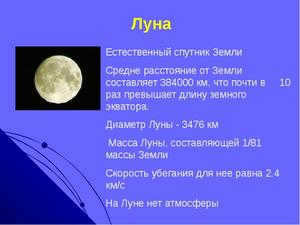
The observable size of the Moon from the surface of the Earth
is equivalent to 360 degrees of angular measurement. – encompassing the entirety of the celestial sphere. As a result, the nocturnal satellite occupies approximately half of one degree (equivalent to an average of 31 minutes) – this represents its angular (observable) diameter. To put it into perspective: the width of an index finger’s nail at arm’s length is approximately one degree, or the size of two moons.
Through a remarkable coincidence, the apparent sizes of the Sun and the Moon are nearly identical from the perspective of Earth’s inhabitants. This is made possible by the fact that the nearest star is 400 times larger in diameter than its celestial companion. However, it is also positioned at a distance 400 times farther away. This fortuitous alignment allows for the unique phenomenon of a total solar eclipse to be observable exclusively on Earth among all the planets orbiting the Sun.
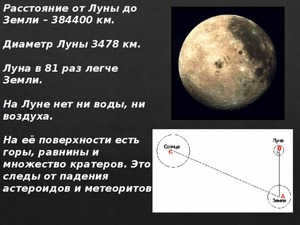
Does the size of the Moon change?
While the true diameter of the Moon remains constant, its apparent size can vary. For instance, during sunrise and sunset, the Moon appears noticeably larger. Despite being low on the horizon, the distance to the observer does not decrease, but actually slightly increases (by the radius of the Earth). This visual effect may seem counterintuitive, and there is no single explanation for this illusion. However, we can confidently attribute this beautiful phenomenon to the peculiarities of the human brain rather than the influence of the Earth’s atmosphere.
The distance between the Moon and the Earth goes through periodic changes, with a maximum distance occurring at apogee and a minimum distance occurring at perigee. Along with these changes in distance, the apparent size of the Moon also varies, ranging from 29.43 to 33.5 arc minutes. As a result, not only are total eclipses possible, but annular eclipses are as well. In annular eclipses, the apparent size of the Moon at apogee is smaller than the size of the solar disk. Approximately every 414 days, the full moon coincides with the Moon’s passage through perigee. During this time, observers have the opportunity to witness the largest night luminary. This phenomenon is commonly referred to as a supermoon, although the apparent diameter is only 14% larger than usual during this time. The difference is quite small, and an ordinary observer would not notice the change.
Thanks to precise measurements, scientists have been able to detect a relatively sluggish but consistent increase in the separation between the Earth and its satellite. The pace at which the Moon is drifting away – 3.8 centimeters per year – is too gradual to perceive a significant reduction in the apparent size of the celestial body. Human nails grow at approximately the same rate. Nonetheless, in 600 million years, the Moon will be positioned so distantly and, consequently, smaller for observers on Earth that total solar eclipses will become a thing of the past.
It’s noteworthy that the Earth’s satellite. According to contemporary theory, the star that emerged when the planet collided with a massive object 4.5 billion years ago was initially 10-20 times closer. However, there was no one to marvel at the sky adorned with a celestial body 10-20 times larger in diameter than it is now.
Video
If you want to gain a better understanding of the vastness of space and our position within it, you can take a look at this fascinating video.
For those who have a curiosity about the cosmos, one burning question often arises: how far away is the Moon from the Earth?
The Moon holds a special place in our collective consciousness as it serves as Earth’s natural satellite, the closest one to the Sun. This proximity to our home planet makes it a subject of great interest. It’s worth mentioning that it ranks as the second brightest object in the night sky and the fifth largest in our solar system.
How we used to determine the distance from the Earth to the Moon
As you are aware, the Earth’s satellite was discovered centuries ago. What is intriguing is that even in those times, people were curious about its distance from us.
Various scientists employed different techniques to calculate the distance between our planet and the Moon.
Today, thanks to advanced space technology, we have been able to visit, explore, and measure everything we can on the Moon. However, how did ancient astronomers manage to determine this distance?
Remarkably, the Moon was the first celestial body whose distance they were able to ascertain. It was the ancient Greek scientists who achieved this feat.
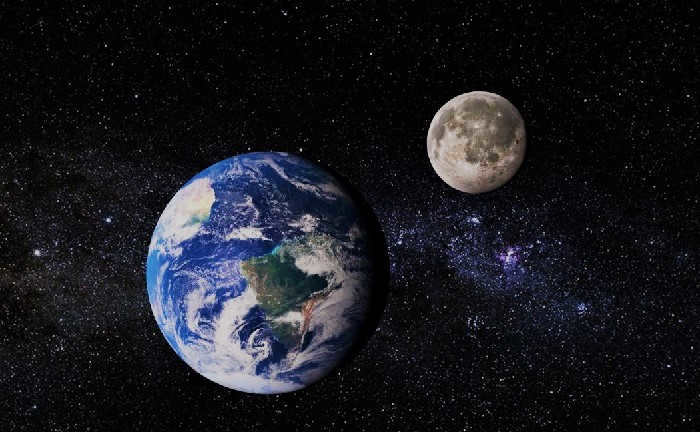
Take Aristarchus of Samos as an example. He calculated the angle between the Sun and the Moon to be 87 degrees. This led him to believe that the Moon is 20 times closer to the Sun than to Earth. However, we now understand that this perspective was incorrect. Back then, Aristarchus did not have access to the advanced tools and knowledge that we have today. Nonetheless, his work made a valuable contribution to the field of astronomy.
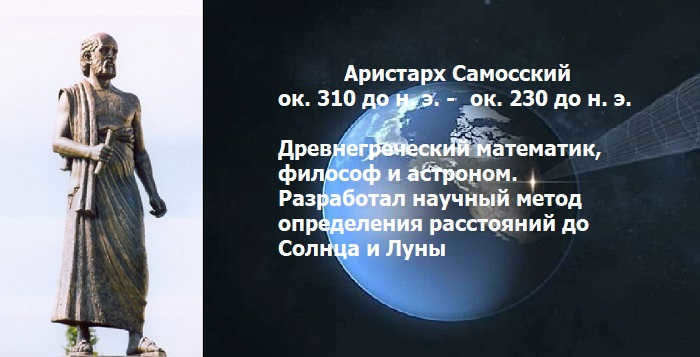
A few centuries before our time, Eratosthenes of Cyrenaica made a remarkable discovery by determining the Earth’s radius. Surprisingly, his calculations were not far off from modern measurements. The fact that he was able to use the planet’s radius to calculate the distance to the moon is truly mind-boggling, considering the time period. While his ancient calculations may not have been entirely accurate, they served as the foundation for further exploration of this subject.
Another notable scientist, Hipparchus of Nicaea, also made observations of our satellite’s movement and formed his own hypothesis. He believed that the Earth-Moon distance is 60 times greater than the planet’s radius.

Contemporary computations
In the present day, astronomers not only ascertain the distance separating the Earth and the Moon, but also calculate the orbit of our celestial neighbor. It has been discovered that the Moon is in constant motion, which means that the space between us is constantly changing.
Thanks to advancements in knowledge and technology, there are now methods available that enable highly accurate measurements of the distances between celestial bodies. These modern calculations are based on Brown’s theory, which was developed during the 19th and 20th centuries. At that time, Brown’s theory employed a trigonometric formula consisting of over 1400 elements, and it even managed to describe the Moon’s motion.
Currently, various techniques are employed for assessing the separation between celestial entities. One such approach is radiolocation, which indeed enables the determination of distance with a precision of several kilometers.
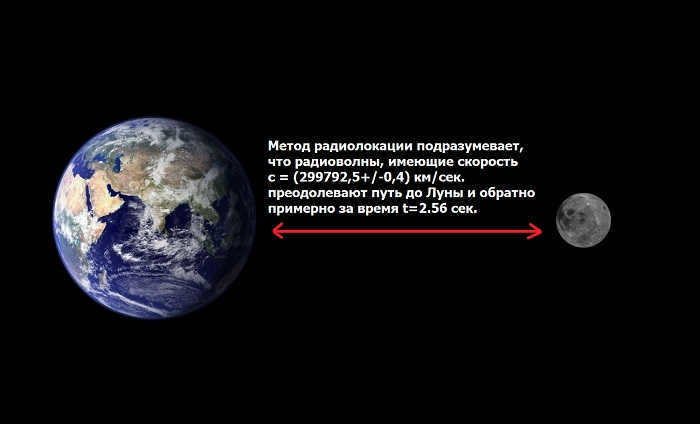
One of the specific methods used to measure the distance to the Moon is laser ranging. This technique allows for precise measurements with only a few centimeters of error. Angular reflectors were placed on the Moon as part of the Apollo program in the 1970s. These reflectors enabled scientists to conduct laser ranging sessions and accurately determine the distance from Earth to the Moon. The successful installation of these reflectors on the Moon’s surface was a significant achievement. Theoretical calculations also provide reliable measurements of the distance.
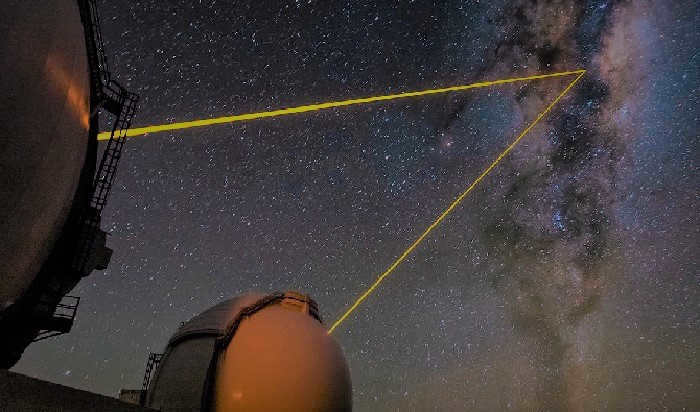
What is the same as the distance between Earth and Moon
Due to the constant movement of the Moon, the path to it is constantly changing. The satellite of the planet alternately approaches and moves away from the Earth. As a result, scientists calculate the average distance, which is measured between the axes of the body centers and expressed in kilometers. This measurement takes into account the periods of motion, phases, cycles, and periods of interaction of the objects.
Currently, the Earth-Moon distance is 384399 kilometers. However, the average value of this interval is usually considered to be 384400 km.
It is also important to note that the distance between us and our satellite increases by approximately 4 cm each year. This change is primarily caused by the spiral orbital motion of the planet, which leads to a decrease in gravitational force. This force is responsible for holding celestial bodies together.

Conclusively, it can be stated that the continuous motion of celestial entities demands careful consideration. As these movements occur, the properties and the distance between these entities undergo changes. Undoubtedly, contemporary astronomy persists in observing and examining the vastness of the universe. And this unquestionably holds immense significance.
Life is in constant motion
Aristotle
A few fascinating facts
The Moon is the sole celestial object that humans have physically explored (excluding the Earth).
An intriguing phenomenon known as the Moon illusion occurs when the Moon is positioned below the horizon line, resulting in a visual distortion. Specifically, its size appears larger to us than when it is positioned higher in the sky.
As we are aware, light is the fastest entity in the universe, taking slightly over a second to travel from the Earth to the Moon.
In theory, the space between the Earth and the Moon could accommodate all the planets in our solar system.
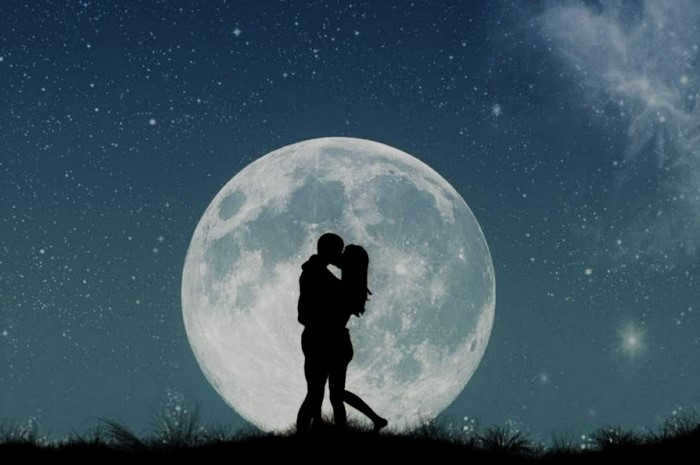
It’s agreed that exploring outer space, including alien planets and star clusters, is an incredibly fascinating subject. For instance, have you ever wondered about the exact distance to the Moon? This question has surely crossed the minds of many. Additionally, what are the origins of the Moon? What materials compose its structure? Is it possible that there’s life, even microorganisms, residing there? The distance to the Moon has always captivated humanity’s curiosity.
The evolution of our understanding of the Moon
This celestial body has captivated people’s interest since ancient times. And at the beginning of the advancement of astronomy, the Moon became one of the initial subjects for observation and analysis. Records of attempts to track its regular movement across the sky and comprehend them date back to ancient Sumerian, Babylonian cultures, ancient Chinese and Egyptian civilizations. And, naturally, to ancient Greece. The earliest documented effort to measure the distance to the Moon (and also to the Sun) was undertaken by Aristarchus of Samos.
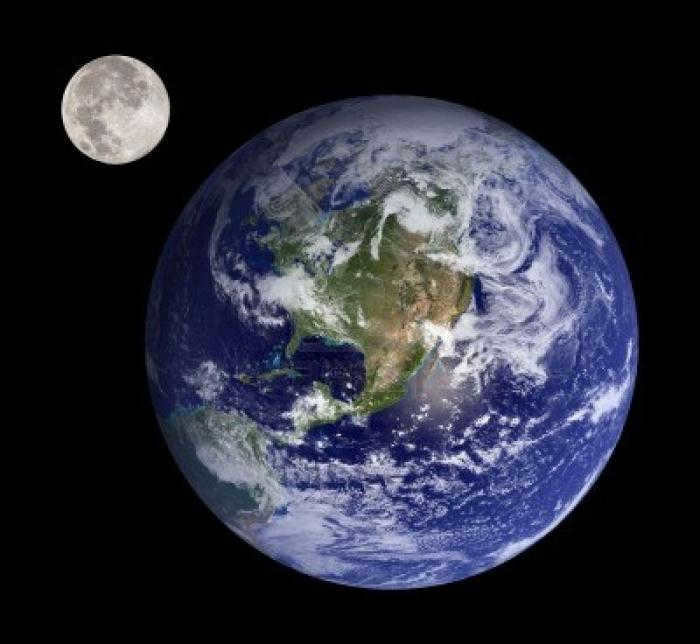
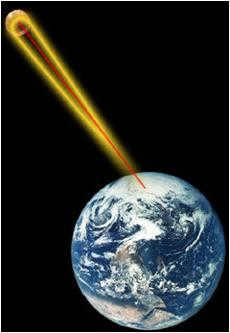
It took the first humans just over three days to reach our satellite. However, the issue at hand is not solely the spacecraft’s speed but also the requirement to calculate the Moon’s motion, follow a specific trajectory, and land in the designated location. Consequently, the trajectory is curved rather than a straight line. Currently, the fastest time for a human-made spacecraft to reach a satellite is 8 hours and 35 minutes. This achievement was accomplished by NASA’s New Horizons spacecraft.
Is the distance between Earth and the Moon growing?
Indeed, it is a fact. Our satellite follows a spiral trajectory as it orbits. Additionally, the distance between the Earth and the Moon increases by approximately 4 centimeters annually. While this may seem insignificant to the casual observer, our ancient predecessors would have perceived the Moon as considerably smaller. Furthermore, this gradual weakening of the gravitational interaction between the Moon and Earth will lead to a reduction in tidal activity and an extensive transformation of our planet’s climate.
To clarify, the Moon’s orbit is elliptical, resulting in periods when it is farther away and other times when it is closer to Earth.
It appears that the Earth-Moon distance can vary by up to 43,592 km. This significant difference is what causes the Moon to appear different sizes in the night sky. When the Moon is at its closest point to Earth (perigee), it appears 15% larger to us than when it is at its farthest point (apogee).
Not only does the distance affect the size, but it also impacts the brightness of the Moon when it reaches its full phase. When the full Moon is at its closest point to Earth, it is typically 30% brighter compared to when it is at its farthest distance. This phenomenon is known as a “super moon”.
If you watch the video titled “One Year of the Moon in 2.5 Minutes”, you will be able to witness the Moon in all its splendid transformations:
A logical question arises: how do we determine the distance to the Moon? The answer varies depending on the time period. In ancient Greece, astronomers relied on geometric knowledge to make their calculations.
For a significant period, the ancient Greeks observed shadows and discovered that when an object is positioned in front of the Sun, the length of its shadow is 108 times greater than its actual diameter. For example, if a ball with a diameter of 2.5 cm is placed on a stick between the Sun and the Earth’s surface, it will cast a triangular shadow measuring 270 cm in length.
This observation was subsequently utilized to investigate lunar and solar eclipses. During a lunar eclipse, the Greeks noticed that the Moon was not completely enveloped by the Earth’s shadow, and the width of this shadow was approximately 2.5 times larger than the Moon itself. During a solar eclipse, it was observed that the size and position of the Moon were such that it could entirely cover the Sun. The shadow cast by the Moon ended on Earth at the same angle as the Earth’s shadow, forming two versions of the same triangle, albeit of different sizes.
The Greeks came to the conclusion that the base of the larger triangle would be the same as one diameter of the Earth (which was already calculated at 12,875 km at that time), and its length would be 1,390,000 km. The smaller triangle would be 2.5 times wider than the diameter of the Moon, and since the triangles are proportional, its height would be 2.5 times greater than the height of the Moon’s orbit. By connecting these triangles, the Greeks obtained the equivalent of 3.5 lunar orbits. By dividing the previously calculated value of 1.39 million km by 3.5, they obtained a relatively accurate distance to the Moon, which was 397,500 km. Quite impressive for an ancient civilization!
Nowadays, the distance to the Moon can be calculated with precision down to a few millimeters. Scientists simply need to measure the time it takes for a laser beam launched from Earth to reach a special reflector placed on the Moon and then return back.
The possibility of determining the Moon’s laser location was established over four decades ago when the Apollo mission astronauts affixed a series of reflectors onto the lunar surface. A laser beam emitted from Earth is directed towards one of these reflectors and subsequently reflected back towards our planet.
Although not all of the 100 quadrillion photons initially launched towards the Moon are returned to Earth, the quantity that does return is sufficient for a highly precise distance calculation.
Given that the speed of light is approximately 300,000 km/s, the laser beam requires slightly over one second to reach the Moon’s surface. The return journey takes an equivalent amount of time. By recording the precise duration it takes for the light to travel to the Moon and back, astronomers can easily determine the exact distance to the Moon at any given time.

